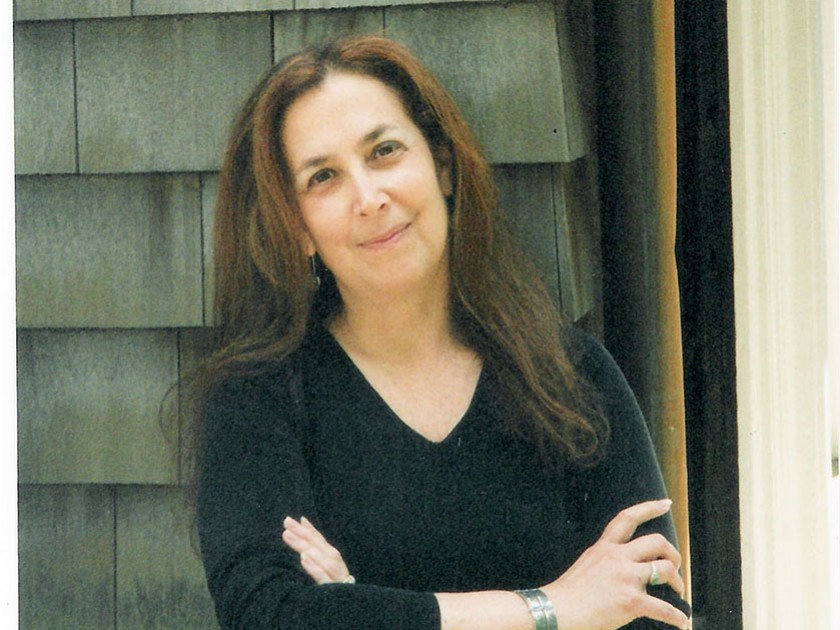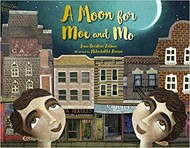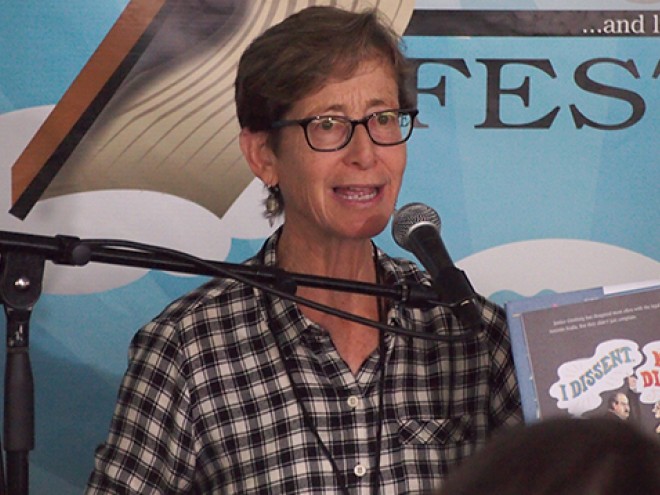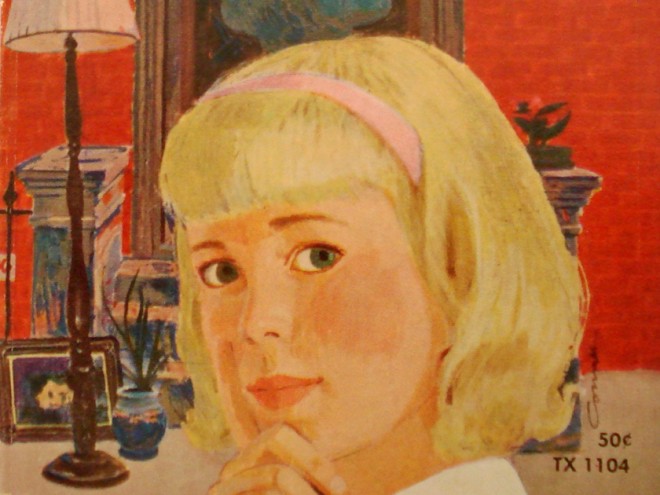
Courtesy of the author
A fine artist as well as an author and illustrator, Jane Breskin Zalben is one of the most critically praised and popular Jewish American authors of books for children and young adults. She has received the Sydney Taylor Honor four times, most recently for A Moon for Moe and Mo, with illustrator Mehrdokht Amini. In the following conversation, Emily Schneider asks Jane about her artistic vision, her collaboration with Amini, and the importance of Jewish identity in her work.
Emily Schneider: One of the distinctive qualities of your long career writing for children is the variety of artistic roles you have played. You have written and illustrated books, and you have worked with other writers and illustrators. How did your career develop in such a multifaceted way?
Jane Breskin Zalben: Well, I pursued my work with passion. I began my career as a fine artist and I continue to paint, including abstract works. I have been a graphic and type designer, art director, teacher, and mentor. I gradually grew into being a writer. I studied with renowned sculptor Richard Serra at Queens College. I taught at the School of Visual Arts for eighteen years, on the subjects of writing, illustrating, and type designing children’s books. I’ve worn many hats!
ES: You collaborated with illustrator Mehrdokht Amini on A Moon for Moe and Mo, your most recent Sydney Taylor Honor Book. This story of friendship between a Jewish boy and a Muslim boy during a year in which Rosh Hashanah and Ramadan coincide is a tribute to coexistence, but it completely avoids facile clichés. The topic is so timely. Can you tell us about the process by which you worked with Amini on this project?
JBZ: You mention that the book deals with timely issues, but I wrote it seven years ago! Initially the project had a different illustrator. When Charlesbridge was ultimately interested, they presented me with the work of five different illustrators. I see children’s book illustration as important, in the tradition of Edward Gorey and Maurice Sendak; I didn’t want the book to have “cartoonish” or simplistic pictures. When I saw Merhdokht’s images, I knew she was the right artist for the book. Her work was so sophisticated. It had color and depth and drew on European traditions of art and animation. I wondered if some readers might not relate to it, but they have embraced it. I’m curious that you say the book avoids clichés. What do you mean by that?
ES: It strikes me that the book doesn’t make grand or simplistic claims about coexistence between Jews and Muslims. Instead, you focus on the friendship between two boys and their families; readers infer that coexistence is possible.
JBZ: Life is made of moments. I remember a trip I made with my husband to Italy. A young woman approached me and my husband as we were touring the Vatican to ask if she could tag along, as she was traveling alone. I said, of course. Later, in the course of the day, she mentioned that she was Palestinian, and I told her that I was Jewish. Life is made up of moments like that.
ES: It sounds as if that chance meeting was in the back of your mind when you worked on Moe and Mo.
JBZ: There were so many ingredients in the book. I often visit Sahadi’s, a Middle Eastern grocery store in Brooklyn. You can get spices which are not available in other markets. I’m a serious cook; I’ve even written two cookbooks.
ES: Yes, I know! We have them. (Beni’s Family Cookbook: For the Jewish Holidays and To Every Season: A Family Holiday Cookbook.)
JBZ: One time when I was at Sahadi’s with my young granddaughter, I noticed a woman dressed in a traditional Islamic chador who was also with a young child. Our children interacted, and I thought, aha — a book! That was another moment reflected in Moe and Mo. I took photos of many places in Brooklyn where the book is set, and my publisher sent them to Mehrdokht, who lives in England. This was part of our collaboration.
ES: Many fans of your work have such lasting affection for Beni, Pearl, Goldie, and your other unforgettable animal characters. Obviously, there is a great tradition in children’s literature of anthropomorphic creatures. Are there particular authors and artists who have influenced your creation of these characters?
JBZ: The great nineteenth and early twentieth century illustrators have been an influence: Beatrix Potter, Arthur Rackham, Edmund Dulac. Matisse’s use of space has been influential in creating my books.
ES: I see Persian miniatures in the incredible detail of your Beni stories. Children and adults are both drawn into the carefully realized world which you present in those books.
JBZ: Yes, I use that detail, and also pay close attention to family dynamics, and humor.
ES: Many, but not all, of your books have Jewish themes and characters. Is there a difference in the way in which you approach books with Jewish themes?
JBZ: No, that would not be authentic to each book, which I view as a distinct entity. I don’t have a mission or a message other than to be true to myself as an author and an artist.
ES: Finally, there is so much discussion today of diversity in children’s books, of ensuring that the experiences of all groups are represented accurately in stories for children. What is your perspective on how Jewish authors and illustrators fit into this picture?
JBZ: Often people have an inaccurate picture, and not always a positive one, of the Jewish people. We are a minority, a very small part of the population. We should be included in the commitment to diversity. It may appear that we have arrived — but we have struggled, and we still struggle. Look at the resurgence of antisemitism today. There needs to be more books about Jewish life. I believe that non-Jews are interested in reading them. When I visit churches and Catholic schools, my books about Beni and the Jewish holidays have been warmly received. I don’t feel uncomfortable saying this — I love being Jewish.
Emily Schneider writes about literature, feminism, and culture for Tablet, The Forward, The Horn Book, and other publications, and writes about children’s books on her blog. She has a Ph.D. in Romance Languages and Literatures.



